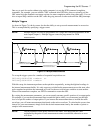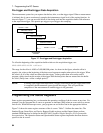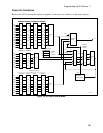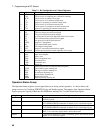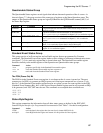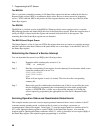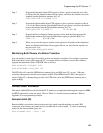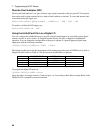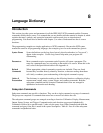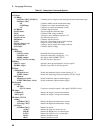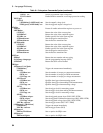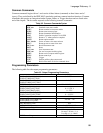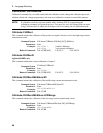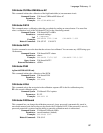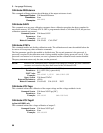
91
8
Language Dictionary
Introduction
This section gives the syntax and parameters for all the IEEE 488.2 SCPI commands and the Common
commands used by the dc source. It is assumed that you are familiar with the material in chapter 6, which
explains the terms, symbols, and syntactical structures used here and gives an introduction to
programming. You should also be familiar with chapter 5, in order to understand how the dc source
functions.
The programming examples are simple applications of SCPI commands. Because the SCPI syntax
remains the same for all programming languages, the examples given for each command are generic.
Syntax Forms
Syntax definitions use the long form, but only short form headers (or "keywords")
appear in the examples. Use the long form to help make your program self-
documenting.
Parameters
Most commands require a parameter and all queries will return a parameter. The
range for a parameter may vary according to the model of dc source. When this is the
case, refer to the Specifications table in the Appendix A.
Related
Commands
Where appropriate, related commands or queries are included. These are listed
because they are either directly related by function, or because reading about them
will clarify or enhance your understanding of the original command or query.
Order of
Presentation
The dictionary is organized according to the following functions: calibration, display,
measurement, output, status, system, trigger, and common commands. Both the
subsystem commands and the common commands that follow are arranged in
alphabetical order under each heading.
Subsystem Commands
Subsystem commands are specific to functions. They can be a single command or a group of commands.
The groups are comprised of commands that extend one or more levels below the root.
The subsystem command groups are arranged according to function: Calibration, Display, Measurement,
Output, Status, System, and Trigger. Commands under each function are grouped alphabetically.
Commands followed by a question mark (?) take only the query form. When commands take both the
command and query form, this is noted in the syntax descriptions. Table 8-1 lists all of the subsystem
commands in alphabetical order.



